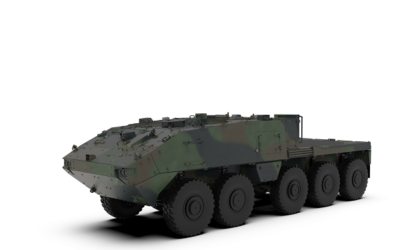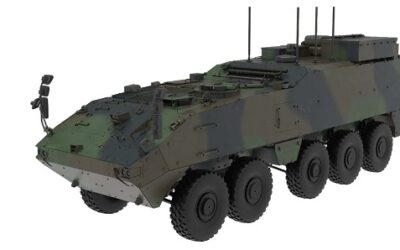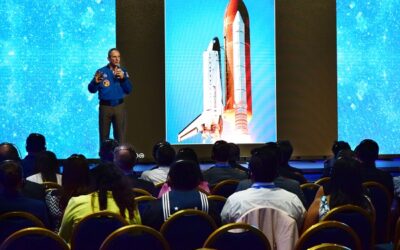US Navy SEWIP takes an important step forward
Lockheed Martin was awarded a contract modification worth $119.6 million on 30th March regarding the full rate production of the US Navy’s Raytheon AN/SLQ-32(V)6 Block-2 version of the service’s combined surface Electronic Warfare and Electronic Support Measure (EW/ESM) under the terms of the ongoing Surface Electronic Warfare Improvement Programme (SEWIP). According to an announcement by the US Department of Defense (US DOD), this work will be completed by the end of 2016.
The SEWIP is arguably the world’s most ambitious ongoing naval EW/ESM initiatives, which folds not only the fleet’s recent history into its scope, but also prepares the navy for the electronic threats that it may well encounter in the future. To understand the significance of this latest award, it is worth examining the SEWIP in closer detail. In a nutshell, the SEWIP programme is rolling a host of modifications onto baseline versions of the AN/SLQ-32 family which has been in use by the US Navy in one form or another since 1974, when it debuted as the AN/SLQ-32(V)1. This version of the system was designed to equip small combatants, auxiliary vessels and frigates. It was later followed by the AN/SLQ-32(V)2 optimised to equip frigates and destroyers, alongside US Coast Guard cutters. Larger ships such as cruisers, battleships and some large amphibious assault vessels and replenishment ships would benefit from the AN/SLQ-32(V)3 which included active RF (Radio Frequency) jamming giving the system an electronic attack capability, while the following AN/SLQ-32(V)4 essentially included two AN/SLQ-32(V)3 systems optimised to furnish the port and starboard sides of an aircraft carrier. Lastly, the AN/SLQ-32(V)5 incorporated the AN/SLQ-32(V)3’s architecture, but in a sufficiently compact package to equip the navy’s ‘Oliver Hazard Perry’ frigates.
Furnishing the ‘Oliver Hazard Perry’ frigates with the AN/SLQ-32(V)5 was a direct response to the attack of the USS Stark, an ‘Oliver Hazard Perry’ class ship on 17th May 1987 in the Persian Gulf during the Iran-Iraq War when the vessel was attacked by two Aérospatiale/MBDA AM-39 Exocet Active Radar Homing (ARH) guided anti-ship missiles launched by an Iraqi Air Force Dassault Falcon-50 maritime patrol aircraft. The USS Stark’s AN/SLQ-32(V)2 was reportedly unable to detect the radar emissions of the incoming missiles, resulting in the ship being hit twice, causing the death of 37 sailors with a further 21 wounded. For the US Navy, and other navies around the world writ large, this incident highlighted the vital importance of ensuring that a vessel also possesses an electronic attack capability to blind the missile’s radar seeker during the end game.
The SEWIP emerged from the US Navy’s abortive Lockheed Martin AN/SLY-2 Advanced Integrated EW System initiative which, despite resulting in the construction of a prototype in 1999, was cancelled in 2002 following cost escalations and delays. The navy then diverted its attention to improving the AN/SLQ-32. Cost estimates state that the overall programme is worth $5.3 billion and will retrofit enhancements onto existing AN/SLQ-32 systems via a series of blocks which incrementally augment the AN/SLQ-32’s capabilities. The Block-2 segment of the work has suffered its share of challenges, and in December 2017, the US DOD published a declassified report which had highlighted several shortcomings regarding the SEWIP initiative to date, particularly those experienced during the Block-2 effort which is tasked with upgrading the AN/SLQ-32’s ESM antenna and receiver. The document stated that the US Navy had agreed for Block-2 to commence full rate production in October 2016 as part of a consolidated effort which merged the Block-1B3 aspect of the upgrade with Block-2. All AN/SLQ-32 systems receiving the Block-1B3/Block-2 upgrade are to be re-designated as the AN/SLQ-32(V)6.
The report continued that the navy’s Integrated Warfare Systems Above Water Sensors Programme Executive Office (PEO IWS 2.0), in charge of the AN/SLQ-32 SEWIP initiative “did not effectively develop and manage electronic warfare capabilities for Blocks-1B1 and 1B2. This occurred because the PEO IWS 2.0 did not resolve all major deficiencies before or after entering full rate production.” The document added that additional funds would now be needed to resolve ensuing problems: “The PEO IWS 2.0 did not effectively develop and manage electronic warfare and electronic support capabilities for Block 2 … As a result, the PEO IWS 2.0 spent $1.8 million to conduct a second phase of (initial operational test and evaluation) for Block 2 and the acquisition schedule increased by almost two years.” Regarding recommendations, the report stressed that deficiencies with Blocks 1B1, 1B2 and 2 should be corrected, and the navy responded that Blocks 1B1 and 1B2 would be replaced by Blocks 1B2 and 2, and that it would address the deficiencies in Block-2. Meanwhile, in January, Lockheed Martin announced that it had finished the construction of the first two examples of the AN/SLQ-32(V)6C Block-2 examples for the US Navy. With the news in late March that AN/SLQ-32(V)6C Block-2 production will now commence, initial deliveries are expected to equip the US Coast Guard’s ‘Heritage’ class offshore patrol cutters, according to reports.
Thomas Withington

























